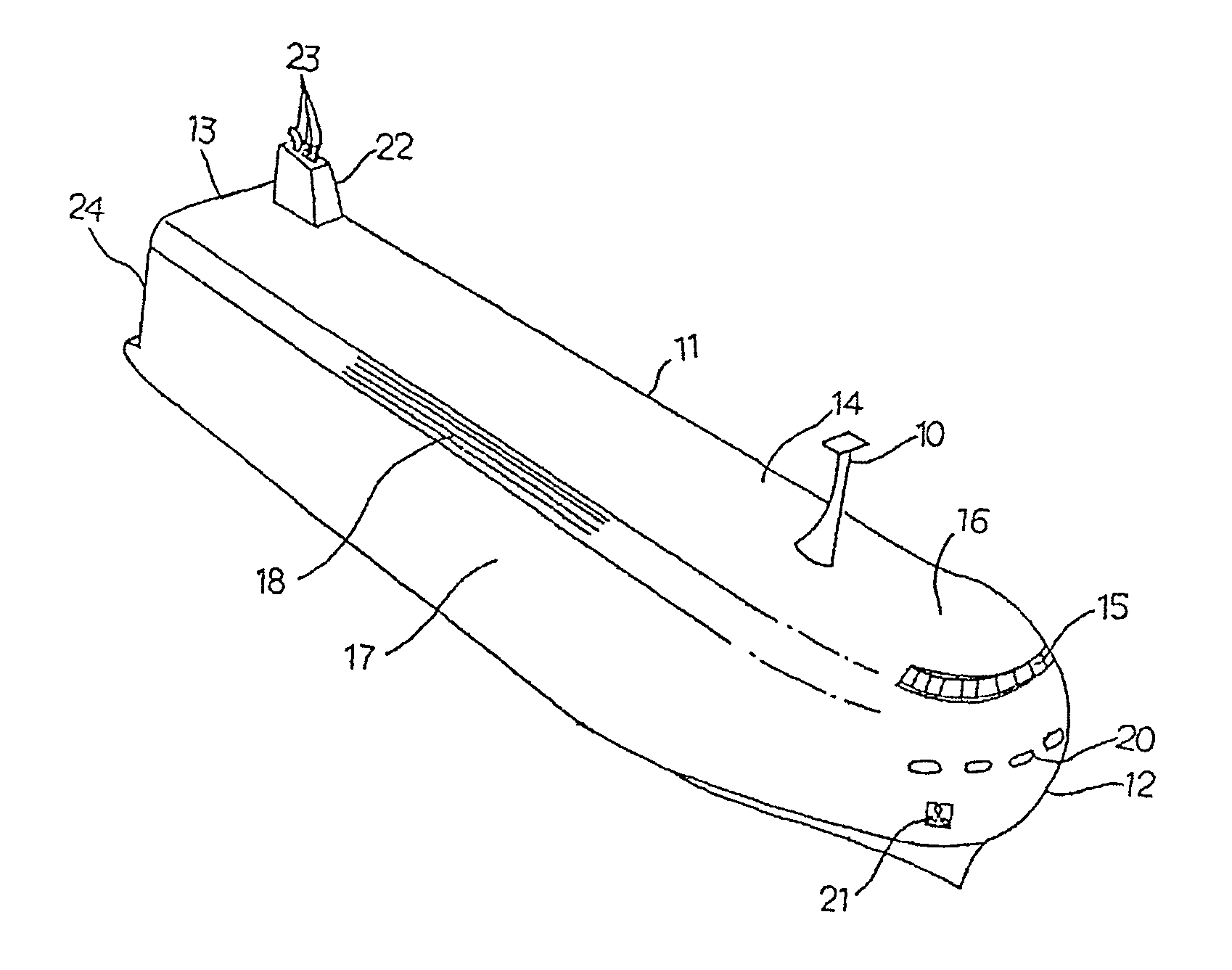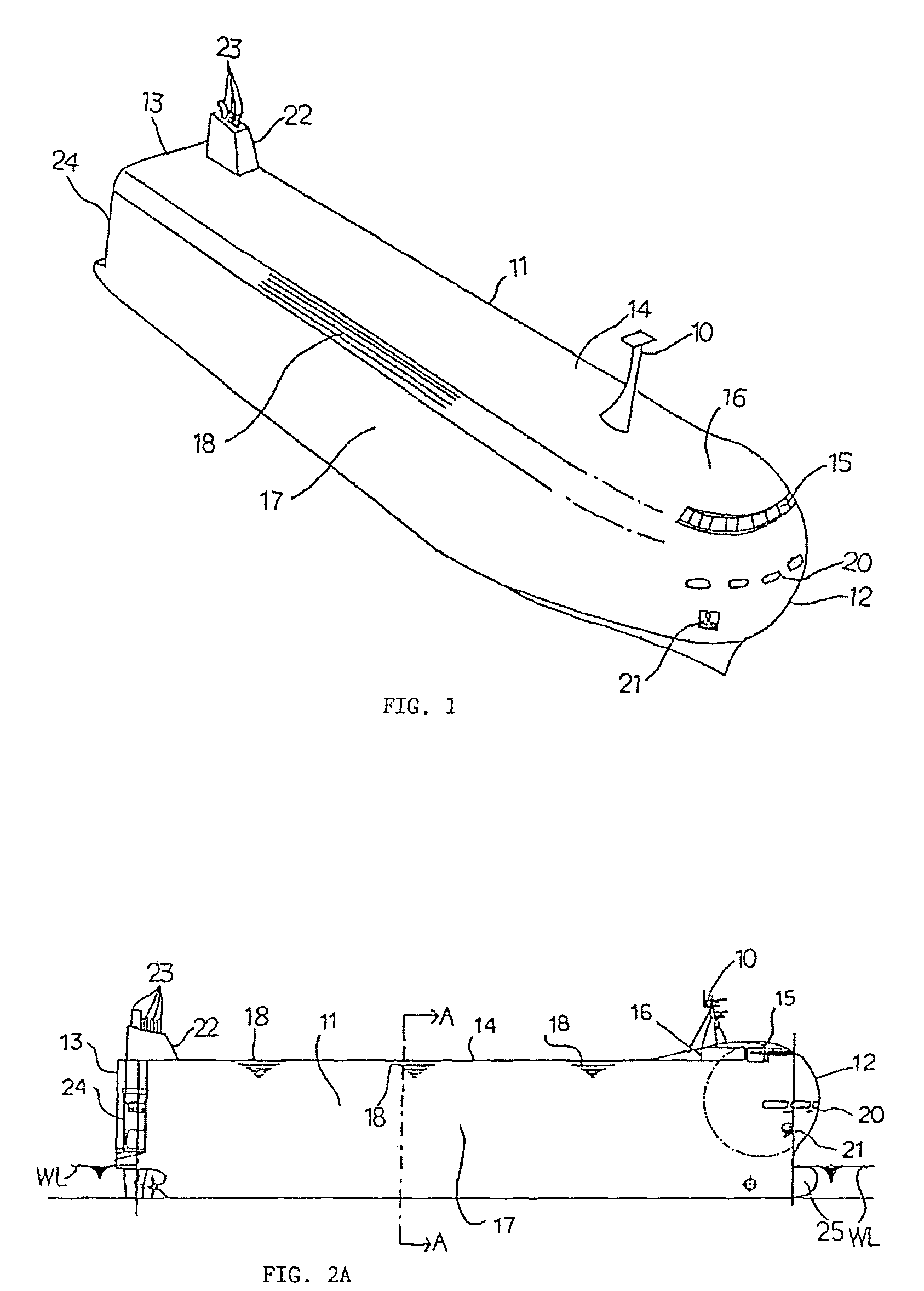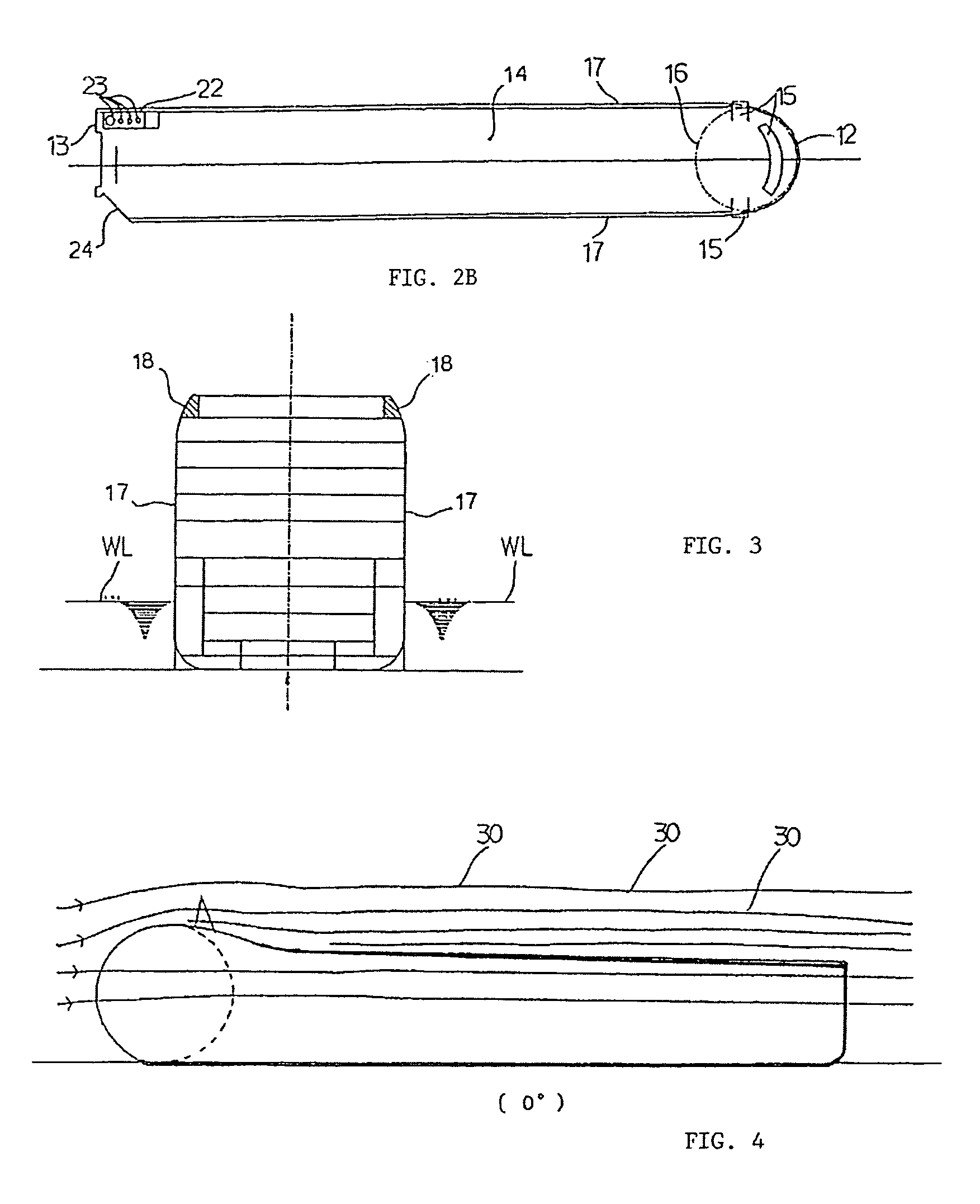Low-fuel-consumption transport ship
a technology of low-fuel consumption and transport ships, which is applied in the field of low-fuel consumption transport ships, can solve the problems of not negligible air resistance, difficult to decrease both air resistance and underwater resistance, and no countermeasures have been made concerning transport ships. , to achieve the effect of reducing air resistance, facilitating operation, and cancelling underwater resistan
- Summary
- Abstract
- Description
- Claims
- Application Information
AI Technical Summary
Benefits of technology
Problems solved by technology
Method used
Image
Examples
embodiment 1
[0043]This embodiment deals with a case where the structure of the invention is applied to a pure car carrier, the structure of the invention being nearly semispherical at the bow and having the same curvature as that of the diameter of the semisphere on both sides of the uppermost deck. FIG. 1 is a perspective view of the hull of the pure car carrier according to the embodiment of the invention and FIG. 17 is a perspective view of the hull of a conventional pure car carrier.
[0044]FIG. 2A is a side view of the bow of the ship of the invention, FIG. 2B is a plan view thereof, and FIG. 3 is a schematic sectional view of when both side portions of the uppermost deck is cut in the direction of width of the ship.
[0045]In the pure car carrier of this embodiment (FIGS. 2A and 2B), the semisphere has its lower end over the water line as viewed from the side surface thereof, and does not cause a change in the shape of the hull under the water level. The upper portion (domed portion) is used ...
embodiment 2
[0081]According to the embodiment of the invention, the flow of air on the uppermost deck forms less exfoliation zone than the prior art. The embodiment which utilizes this nature will now be described dealing with a vertical tail 22A incorporating a chimney 22 nearly in the central portion thereof, and having a leading flap 22B and a trailing flap 23C of which the angles can be adjusted with reference to FIGS. 11, 12 and 17.
[0082]This embodiment deals with a pure car carrier of a structure having a semispherical shape at the bow and a structure of the same curvature as the diameter of the semisphere on both sides of the uppermost deck, being further equipped with the vertical tail that is remotely controlled. FIG. 1 is a perspective view of the pure car carrier of the invention.
[0083]FIG. 11 is a plan view of when the vertical tail of the ship of the invention is provided with the leading flap and the trailing flap of which the angles can be adjusted, and FIG. 12 is a plan view ill...
PUM
 Login to View More
Login to View More Abstract
Description
Claims
Application Information
 Login to View More
Login to View More - R&D
- Intellectual Property
- Life Sciences
- Materials
- Tech Scout
- Unparalleled Data Quality
- Higher Quality Content
- 60% Fewer Hallucinations
Browse by: Latest US Patents, China's latest patents, Technical Efficacy Thesaurus, Application Domain, Technology Topic, Popular Technical Reports.
© 2025 PatSnap. All rights reserved.Legal|Privacy policy|Modern Slavery Act Transparency Statement|Sitemap|About US| Contact US: help@patsnap.com



